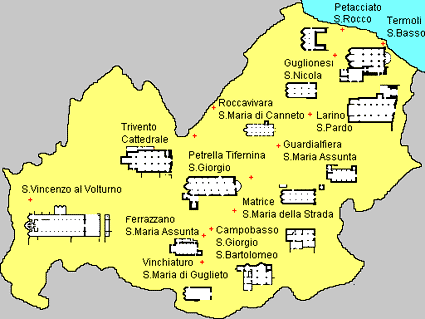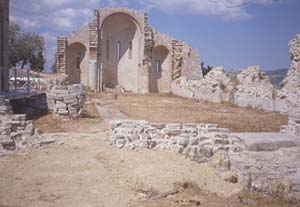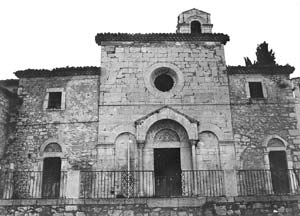![]() Sacred
architecture
Sacred
architecture
In
Molise there are numerous examples of sacred architecture dating back to the
Norman-Swabian period. Though it cannot be claimed that the medieval churches
of Molise are directly connected with the Normans, it is certainly true that
they were influenced by their presence. The arrival of the Normans, though it
did not solve the problem of conflicting factions, facilitated the work of the
Benedictines and the influx of artists and craftsmen who were technically more
advanced than the local ones, and helped to intensify trade with the
neighbouring regions. At the time of the Normans the cultural environment of
Molise was also influenced by the traffic on the pilgrimage routes, which
stimulated closer relations with the Campania and Apulia regions and with
countries overseas.
Some of the most important examples of sacred architecture include the church
of St. Mary della Strada in Matrice (consecrated in 1148), St. George at
Petrella Tifernina (in its present state it dates back to 1211), the cathedral
of Termoli, the churches of St. George, St. Mary de Foras (1177), St. Leonard
and St. Bartholomew in Campobasso, the church of St. Mary of Monteverde in
Vinchiaturo, the church of St. Mary of the Assumption in Ferrazzano, the
church of St. Mary del Canneto in Roccavivara, the churches of St. Nicholas
and St. Adam and the cathedral of St. Mary of the Assumption in Guglionesi,
the cathedral of St. Mary of the Assumption in Guardialfiera, the cathedral of
Trivento, St. Mary a Mare in Campomarino and the church of St. Rocco in
Petacciato.
![]() Termoli
Cathedral
Termoli
Cathedral
![]() Saint
Mary della Strada in Matrice
Saint
Mary della Strada in Matrice
![]() Saint
George in Petrella Tifernina
Saint
George in Petrella Tifernina
![]() Saint
Angelo in Grotte
Saint
Angelo in Grotte
 |
|
|
|
Morrone S.M.di Casalpiano |
|
|
Campobasso S.Bartolomeo |

